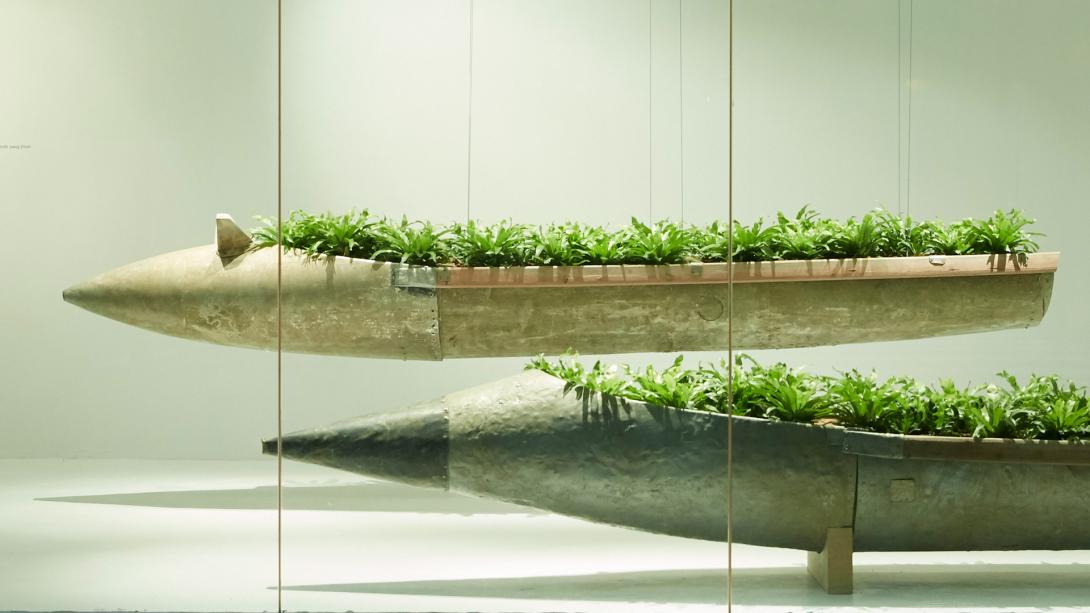Bounpaul Phothyzan
APT9
Born 1979 Champasak Province, Laos
Lives and works in Vientiane, Laos
Bounpaul Phothyzan’s sculpture, installation and land art practice is driven by social and environmental issues relevant to Laos — from deforestation to the devastating legacies of war. His recent sculptures and installations include bomb casings and rusted ordinances, which are commonly collected and repurposed by locals for a range of uses, from canoes to architectural supports. Laos is the most bombed country in the world per capita, and these casings are a part of daily life in rural and farming communities, where unexploded bombs cause an immense number of casualties every year across the country. By incorporating them into his practice, the artist creates aesthetically appealing works that comment on the nation’s turbulent history and the resilience of its people.

Bounpaul Phothyzan / Laos b.1979 / Lie of the Land 2017 / Aluminium, wood, soil, seeds / 2 parts: 80 x 400 x 80cm (each) / First commissioned for 'Imaginarium: To the Ends of the Earth' at the Singapore Art Museum / © Bounpaul Phothyzan / Image courtesy: The Singapore Art Museum
Bounpaul Phothyzan confronts social and environmental concerns facing contemporary Laos through an experimental practice comprising land art, sculpture, community projects and site-specific installations. Lie of the land 2017 is the result of Phothyzan’s reflection on the situation of unexploded ordinances (UXOs) in Laos. The landlocked country remains the most bombed nation in the world per capita, subjected to more than 580 000 bombing missions by US Air Forces between 1965 and 1975, resulting in around 80 million UXOs being abandoned in the environment.
In developing Lie of the land, Phothyzan travelled through the provinces of Bolikhamxay, Xekhong, and Attapeau in southern Laos, where locals recover and disarm munitions and repurpose them as everyday items. Large canisters become canoes, while smaller pieces become tools or domestic containers, or even parts of architectural structures. By creating plant containers out of two large bombshell canisters — which would once have carried hundreds of small cluster bombs — Phothyzan conveys the reality of those who live with the remnants of war as part of everyday life, and signals the perseverance, adaptability and resilience of the people of Laos.
